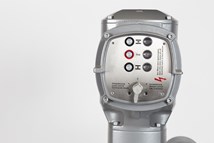Liquid Cooling Technology for Data Center Cooling
Technology from Nexalus will work with Hewlett Packard Enterprise servers to turn data centers into closed-loop clean energy power stations.
Nexalus, a supplier of advanced liquid cooling solutions, today announced a collaboration with the OEM team at Hewlett Packard Enterprise (HPE) to integrate Nexalus’ energy-efficient liquid cooling technology into HPE’s server lineup. This collaboration aims to address the rising energy and environmental demands of data centers — an industry that contributes over 100 million tons of CO2 annually. By transforming data centers from energy consumers into clean energy generating assets, the company will deliver a closed-loop, circular economy solution.
Through this collaboration, Nexalus will deploy its liquid cooling systems in three of HPE’s leading server models: the HPE ProLiant DL360, DL365 and DL380a. These models are now available with Nexalus’ proprietary cooling technology, offering enhanced thermal performance and reduced energy consumption while contributing significantly to data center sustainability.
Driving energy efficiency and sustainability
Data center operators are under pressure to reduce energy consumption and environmental impact. This collaboration with HPE provides a much-needed solution. Nexalus’ liquid cooling technology unlocks the potential of circularity in data center cooling by sealing the server, allowing data centers to redeploy thermal energy that is otherwise wasted using existing air-cooling solutions, which possess inferior thermal properties compared to water. Nexalus’ liquid cooling solution enables up to twice the thermal design power of a CPU and the transport of 4,000 times the thermal energy per unit volume as compared with air.
Utilizing Nexalus’ patented liquid cooling solution, data centers can achieve approximately 35% reduction in energy consumption in a typical 20MW facility, with potential CO2 emission reductions of up to 23,000 tons. Furthermore, Nexalus’ technology enables the conversion of waste heat into green energy, which can power up to 6,000 homes, offsetting an additional 24,000 tons of CO2.
By rethinking energy recovery, Nexalus positions data centers as contributors to the global energy cycle rather than consumers. This breakthrough innovation is poised to reimagine the power supply/demand curve for data centers at a time when data center operators are grappling with rapidly rising demand. Goldman Sachs Research estimates that AI-driven data center power demand will grow 160% by 20301.
Nexalus’ liquid cooling technology is designed to provide a more effective alternative to traditional air cooling, offering:
- Cooling efficiency: Enhanced heat removal from servers allows peak operational performance.
- Energy savings: Reduced reliance on energy-intensive air conditioning systems, leading to lower power consumption and costs.
- Water efficiency: Closed-loop water cooling design reuses the same water repeatedly while efficiently transferring heat, resulting in significantly reduced water consumption with effective water usage efficiency (WUE) of zero, compared to average data center WUE of 1.8L per 1kWh.
- Increased density: Allows for over 10 times higher computing density in data centers racks.
- Sustainability: Reduces carbon footprints and transforms data centers into clean energy generating assets with improved energy reuse to support global sustainability targets.
For more information visit the Nexalus website.
1 https://www.goldmansachs.com/insights/articles/AI-poised-to-drive-160-increase-in-power-demand
RELATED CONTENT
-
The Fundamentals of Gate Valves
The venerable gate valve remains a primary choice for many service applications.
-
The Evolution of the All-Encompassing Ball Valve
The compact design, simplicity of use, ease of repair and wide performance capability have helped to make the ball valve a dominant design in modern industrial applications.
-
Understanding Torque for Quarter-Turn Valves
Valve manufacturers publish torques for their products so that actuation and mounting hardware can be properly selected.







 Unloading large gate valve.jpg;maxWidth=214)


